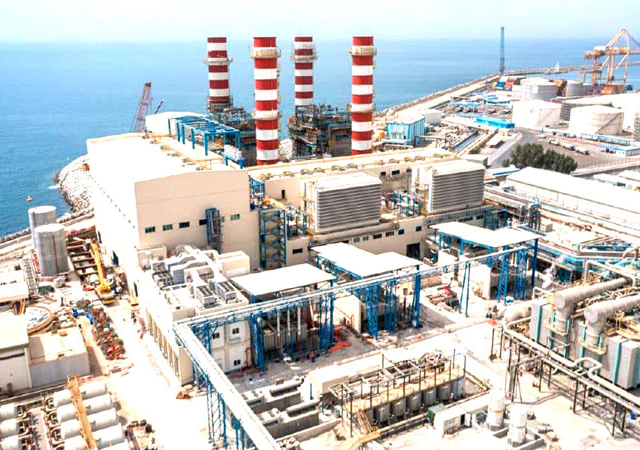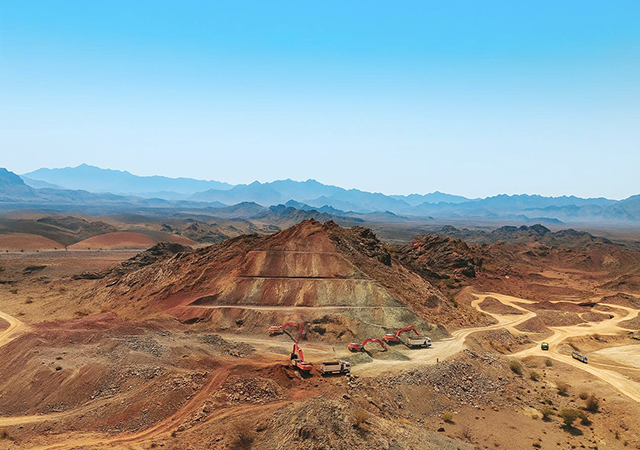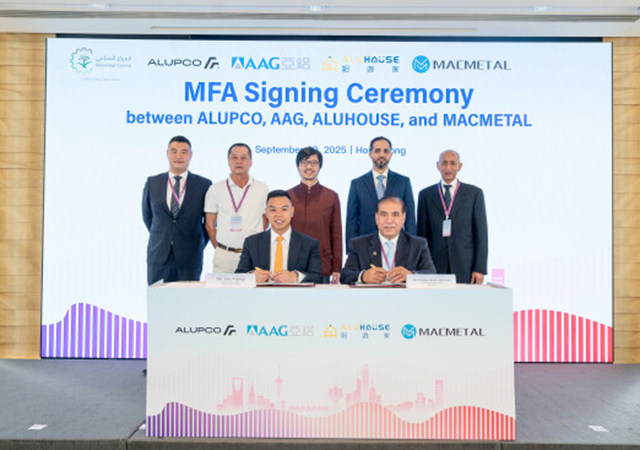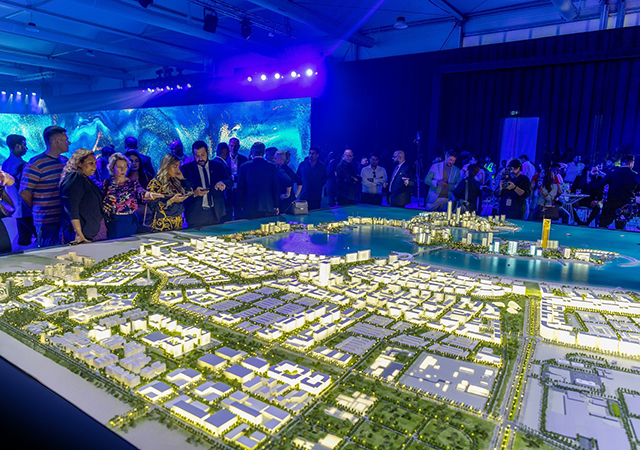 The Monarch Dubai’s lobby is the biggest in the emirate.
The Monarch Dubai’s lobby is the biggest in the emirate.
It won't come as a surprise to many that the senior architect behind The Monarch Dubai, the emirate's new luxury hotel, is from Turin. Italians are, after all, famous for their style and appreciation of all things beautiful.
Since its soft opening in November last year, Enzo Messina's five-year labour of love has been attracting a steady stream of royalty and international bigwigs including Richard Branson and Kofi Annan.
From the outside, The Monarch Dubai's two sleek, blue glass towers at the entrance of the emirate's famous thoroughfare could be just another couple of attractive office blocks. In fact, one of them is. All 37 floors are already leased, due, no doubt, to its ideal location in the heart of the financial district, as well as its splendid address: 1, Sheikh Zayed Road. The office tower is also home to the Dubai headquarters of RMJM, one of the largest architectural consultants in the world, one of whom is Messina.
It is when one enters the 33-storey hotel that the real wonderment starts. The Monarch Dubai's lobby, which is the largest in the emirate, is fast becoming the place to be seen. In the middle, surrounding a cluster of palm trees, is a highly stylish lounge, where refreshments are served. The floors are made of coconut wood, creating a natural and warm feel to the lobby. It is surrounded by a shallow water rill that continues the natural element.
“The most important part of the design was the space within the atrium and its visual connection between the functions on the other floors,” says Messina.
A series of glass balconies enables those on the first and second floors – home to restaurants, the business centre, the conference area, and the cigar lounge – to enjoy the atmosphere in the lobby, and vice versa. “All these functions interact and create a very vibrant and active space, full of people and life,” he says.
Perhaps the most stunning feature is the lobby's marble flooring, called Burma teak, which came from a quarry in the Balochistan area of Pakistan. “It’s a very small quarry and I think we used most of the material left in the world,” explains Messina. “This marble had always been used for very small spaces or even small objects. It’s never been used on this scale – 2-3,000 sq m – before. The stone is not even recommended for flooring. I don't think it’s ever been used for that purpose before. It’s so highly decorative most people use it for wall decoration. Before buying it, we submitted sections to mechanical tests because we were worried about whether it was going to work or not. It was a big gamble to use it. People were recommending against it saying it was risky, but we thought it was worth it as the material is very beautiful.”
It was a gamble that has more than paid off. Not only is the visual result stunning, but the Burma teak, which costs around Dh1,000 to Dh1,200 ($272.5 to $327) per sq m, has survived months of builders’ traffic. Not one piece of stone was broken or damaged.
“Every piece is different from the next,” enthuses Messina gazing at the stone’s sedimentary and fracture lines. “You can see how the stone has been compacted and broken due to the metamorphic process. You can really feel that it’s alive. It’s like a painting in that you can look at it for years without getting tired. The brown and yellow colour is due to the presence of iron, but the purple is a mystery. The idea was to use timeless materials. We don’t like fashion architecture that will last one season and disappear. The stones we have selected are beautiful now, and will be beautiful in 10 years’ and 50 years’ time.”
The sublime colours have been echoed in the chairs and sofas in the seating area, and the coconut flooring at the entrance to the lobby has been stained a shade of burgundy to further complement it. While The Monarch Dubai’s interiors were by BBGM, as the firm is based in New York RMJM was asked to supervise them.
Another feature that catches the eye in the lobby is the entrance to Empire, the hotel's signature restaurant. The glass entrance is covered in 50 sq m of lead crystal branches, produced in the UK, which always attracts the curious because of its aura of mystery. “It makes you want to see what is inside. It’s very inviting,” says Messina.
The bright but soothing lighting in the lobby has been achieved by using a ceiling of high-performance glass, fritted with ceramic dots, which creates a shadow below and reflects about 50 per cent of the sunlight. Hanging in front of the glass is what looks like a sea of cream canvas sails.
“We tried to create this diffused light in the lobby to make it warm and cosy, with no strong shadows,” explains Messina, who has worked for the Brunei royal family. “We wanted to make it very bright during the day, but without too much direct sunlight. There is also a direct connection with the outside through the glass entrance. I like the idea that from inside you can see that you are still in Dubai. You don’t want to be totally isolated."
The brief for The Monarch Dubai’s 236 rooms, suites and serviced residences was to create a contemporary, Arabian feel. On the backs of the doors and covering the panelled lighting are geometric patterns, traditional in Islamic art, some of which are repeated in the lobby.
“It’s traditional decoration, but used in a modern way. It adds a sense of place, in contrast with some hotels where you don’t really know which continent you’re on. The idea was to make you feel that you are in the Middle East,” he adds.
Above the sitting area in the rooms are beams mounted against a stark white ceiling to reflect the historic local architecture.
The bathrooms are generally sleek and minimal, expect for those in the Monarch Suite, the hotel’s pièce de résistance, which is located on the top two floors. Claimed to be the largest suite in the Middle East, it covers an area of 1,130 sq m. As well as three bedrooms, there is a private cinema, library, gymnasium, swimming pool, two majlis with double-height space, and a terrace with an almost 360-degree view of Dubai. The bathroom in the master bedroom is covered in mother-of-pearl.
“The brief was to have the largest suite in the Middle East. We started on one floor and then we thought ‘Why don’t we expanded it over two floors?’ so it got better and better. It’s a very beautiful and opulent space. There is a very big fossilised shell in the stonework at the entrance of the bathroom on the wall, which adds to the natural feeling,” says Messina, who has worked as project architect for KSR Architects, London, as well as Raymond Woo and Associates Architects in Singapore.
That natural feeling is repeated in a 150-m stone wall on the outside of the building, made from Jurassic stone full of fossils from the Jura region of Germany.
“If you look at them you can see the history of the earth, and things that were alive 180 million years ago,” says Messina. “Most of the materials we use are rich and full of history. They are beautiful and invite you to discover a bit more. When you get closer and closer you realise how rich the stone is when you see how many living creatures are embedded in it. While they were mining the stone they found a 2-m-long fish, perfectly preserved, which they kept in the quarry’s office. Normally, when stone is used here, every panel is exactly the same colour, creating a homogeneous effect at a distance. It appears very flat, and sometimes you can’t tell if it’s concrete or a natural material. Using it in the way that we have done, you can see from far away that it's natural. It has never been used before in a mosaic effect in the Middle East. Everybody is asking how we did it. You have to take some risks sometimes.”
The five-star hotel also boasts a luxury health club and spa, offering a swimming pool, 10 treatment rooms, gym, Jacuzzi and steam room.













(5).jpg)








.jpg)



















































